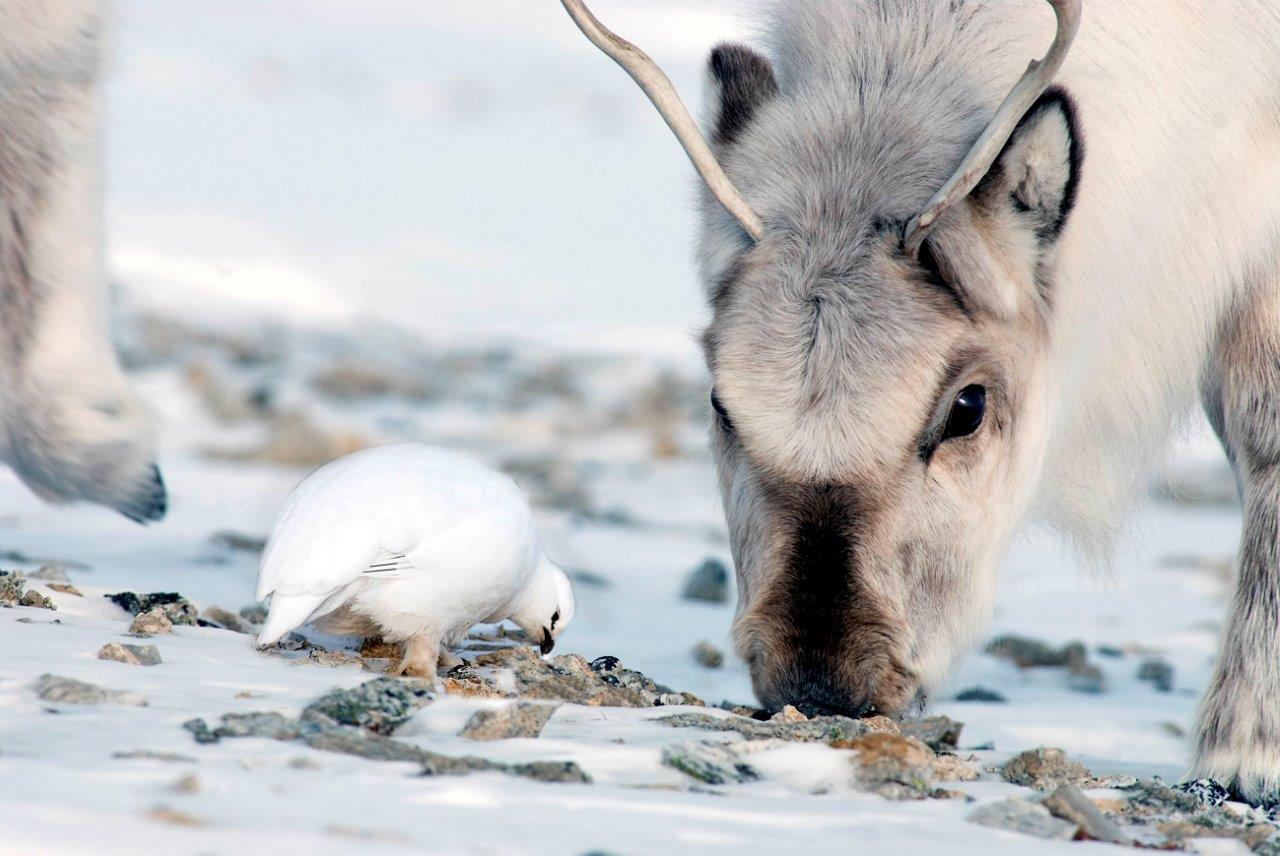 Vegetation productivity expressed as summer NDVI on Nordenskiöldland (left) and Brøggerhalvøya (top right) in high-arctic Svalbard.
Vegetation productivity expressed as summer NDVI on Nordenskiöldland (left) and Brøggerhalvøya (top right) in high-arctic Svalbard.

Vegetation campaign at Svalbard. Photo: Jennifer Stien

The sparse and cold environment at Svalbard might be most effected by climate changes. Photo: Eva Fuglei

Svalbard reindeer and Svalbard ptarmigan feed on the frozen Svalbard tundra. Photo: Nicolas Lecomte